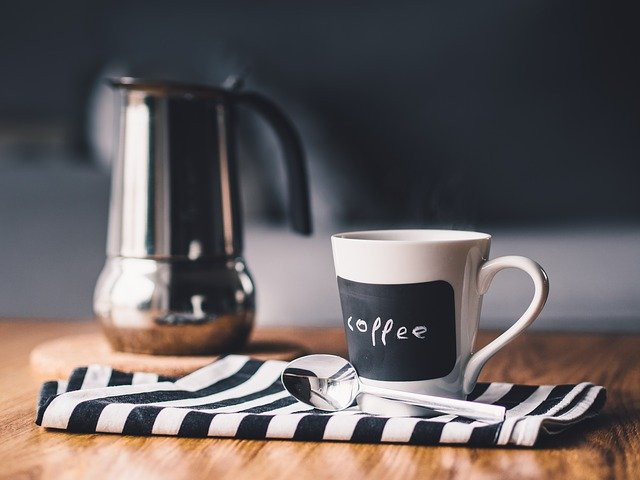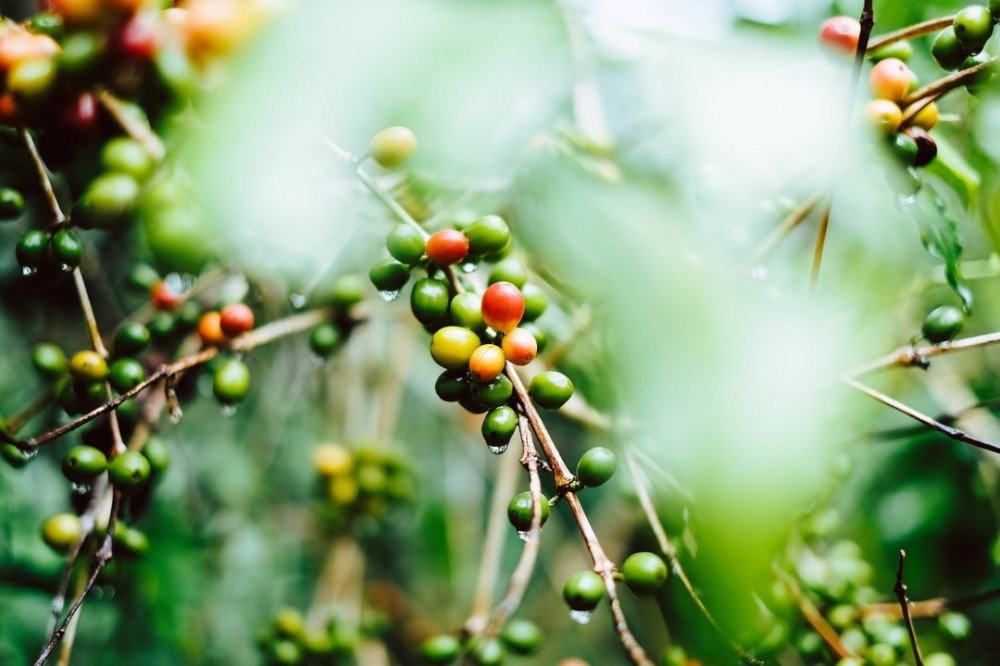Coffee — you see it in styrofoam cups on the way to work, in the elevator to the conference room, in university classrooms, on park benches, and in kitchens. In short, it’s everywhere. This beverage is so well-loved across the world because it’s one of the most versatile drinks in the world. Hot coffee, cold coffee, milk coffee, black coffee, and decaf coffee are some of the few popular ways in which people take their coffee.
However, there are endless ways to make this beverage and an endless list of reasons why you should take up this habit. Want to know more? Read on!

Why Do Some People Love Coffee?
A huge majority of the world is obsessed with this beverage. Why? Well, there are plenty of reasons for this worldwide coffee fascination. Firstly, it is delicious on its own, but it’s also incredibly versatile. You can add an infinite number of flavours to it and drink it at any temperature you like, and it’ll still be as delicious as ever.
Not only that, but it also has quite a few benefits. The caffeine content in coffee is quite high, so most people drink it to increase their concentration and performance at work or in their studies. It also improves wakefulness and allows you to have better memory. Not only that, but it also improves your health in many different ways such as by reducing your risk of stroke, heart disease, cancers, Parkinson’s, and Type II Diabetes.
However, the caffeine content in caffeine makes some people feel sick if their body isn’t used to it. If consumed in great amounts, the caffeine in coffee can cause you to have an increased heart rate, nausea, dizziness, anxiety, and diarrhoea. These are some reasons why some people avoid drinking coffee.
However, decaf coffee can help with some of the caffeine-based coffee side effects – learn more about decaf in 2022.
Buying Coffee vs Making Coffee
For coffee lovers, the biggest dilemma of all is, what’s better — buying coffee or making coffee at home? Both things come with their long list of pros and cons, so there’s no one size fits all approach that we can take here.

Buying Coffee
Buying coffee has long since been a tradition in the modern world. Some people enjoy sitting in a serene cafe having a piping hot cup of freshly brewed coffee, while others like getting in line for a big paper cup of mouthwatering goodness that’s more like dessert and less like a coffee.
The best part about buying coffee is the manufactured taste of it all. The sweetness, the dessert-like goodness, the infinite number of options for toppings and add-ons all combine to create a coffee experience that’s heaven for its addicts. In addition, there’s also the social factor for it. Who doesn’t like going for a coffee run after a boring day in the conference room where you can people-watch for a little bit, converse with the barista and even get some fresh air?
However, buying coffee can get a little expensive. Some experts say you can save up to £2,000 a year if you start making your coffee at home. However, it’s not much in the grand scheme of things, so if takeout coffee is where your heart truly lies, don’t let anyone stop you from following your heart’s desire!
Making Coffee At Home
Making coffee at home is an experience that’s in a league of its own entirely. You get to enjoy a hot cup of coffee in the privacy of your kitchen without any noise, jostling, or unnecessary conversation. If you’re the kind of person who enjoys their peace, this is the perfect thing for you! In addition, you can make coffee according to your own preferences at home and not have to drink overly sweet or milky coffee that someone else makes.
And it’s possible to make hot coffee at home with the most basic of tools, iced coffee or even cold brew without any special equipment so there really are no excuses not to enjoy it if you fancy a cup!
The best part about this all is that you save some money as well every time you don’t step out for a coffee, in addition to decreasing your impact on the environment.
Making The Best Cup Of Coffee At Home
Are you one of those people who would like to use a lot of gadgets to get the taste exactly right, or do you want to stick to simpler methods? If you’re a simple methods kind of person, you’re in luck.
This section will teach you what will enhance the taste of your coffee and what will make it taste bitter and acrid. In short, what to do and what not to do with your coffee. So, what are you waiting for? Let’s dive in!
- Coffee tastes best when you grind the coffee beans right before making the coffee. The fresh smell, the rich taste, the perfect texture — all of these things come when you grind your coffee beans right before brewing your cup.
- Always use good quality oxygen bleached filters. They’ll allow you to get the most flavor from your coffee grounds.
- Don’t always use boiled water in your coffee. Cold water works just as well for a drip machine and actually makes your coffee taste better. Who knew?
- Don’t buy coffee beans that have been on shelves too long. They become stale and lose most of their taste and aroma. Try to get new coffee beans every two weeks.
- Clean your coffee machine every once in a while. Whether you use a Nespresso or a Keurig, don’t forget that if there’s coffee gunk sticking to the machine’s insides, your fresh coffee cup won’t taste as good.
Well, these were a few tips to help you make a good cup of coffee without relying on sophisticated equipment and expensive coffee shops.
Coffee And Poor Farmer Treatment
Let’s be real. Coffee is delicious and delivers the kick we need to go about our day. However, we shouldn’t forget the impact it has on our environment and on other people’s lives.
The farmers who harvest our coffees are the hardest hit when it comes to lack of sustainability and equality. Women farmers work nearly the same hours as male coffee farmers but do not get the same yield because they do not have the tools or resources to make it happen.
Not only that, but the lives of many children all over the world are in danger because of coffee farming. Most young children of schoolgoing age are employed as cherry pickers in the coffee industry, causing them to stay out of school, promoting the cycle of poverty and abuse.

In addition, ever since coffee prices decreased all over the world, coffee farmers and harvesters have barely been able to meet the financial demands of their farms, let alone make profits to feed themselves or their workers.
That being said, we need to find permanent solutions to solve global supply chain issues while creating a market that favours farmers, the consumers and the environment. Coffee companies need to do their part by balancing their supply chains so that farmers and producers do not have to resort to underhanded measures to achieve their profits. Doing so will ensure less underpaid children will be employed by these farmers and women will get better pay.
Coffee And Sustainability
Sustainability is a huge problem in the coffee industry. The resources that the coffee industry eats up are nearly impossible to make up for in the short time that it takes for the next harvest. However, most companies still opt for using coffee that was harvested in ways that were not standard-compliant with the coffee industry standards. These ways hurt the environment, ruin the ecosystem irreparably and influence climate change.
Large multinational companies that benefit from these arrangements need to step up and do their part by adhering to strict policies that ensure their business models will not hurt the country they’re importing from and its inhabitants.
In addition, many countries are discussing imposing a tax called the ‘Latte Levy’. The latte levy will be a small percentage of money that every user who requests a disposable cup will have to pay. This step will ensure most people will start bringing their own cups to coffee shops or drink inside it, so the use of disposable cups is decreased.
Many innovators are also looking towards creating recyclable and compostable coffee capsules and pods, so the plastic waste that occurs due to these two things is somewhat reduced. That being said, there’s still a long way to go from there to a world where coffee is sustainable, ethically produced, and the plastic waste minimal.
Conclusion
Coffee is a whole universe in itself, and that’s what we tried to explore in this post. Whether you’re a beginner or an old coffee addict, you know the importance of the right ingredients combined with the right technique to create a flavour that stays with you for days.

However, that’s not all. We also need to be mindful of our environmental impact when we consume a cup of hot joe and make sure we’re doing the most we can to reduce it.
Have you been inspired to try a different coffee? Let us know in the comments.

OMG! I am a coffee lover for sure. I didn’t used to be until my 30s. My favorite is Starbucks. I love Starbucks because their coffee is super strong. I love your section on how to make the best coffee at home. But honestly, I don’t make mine from scratch. When I’m home, I use Bustelo instant coffee. I then either put heavy cream (not half and half), stevia or equal in it. Soooo delicious. But when I’m doing Keto, I put MCT oil in it and some grass fed butter, then whip it up in my Magic Bullet which makes it bullet coffee. Have you heard of that? Oh god. Heavenly. Great post.
Strong coffee is a morning must for me, although I must admit it’s been years since I’ve had a Starbucks – I guess I’m a bit too fond of the way I make it at home!
I’ve not tried Bustelo – but espresso in an instant coffee format definitely deserves a shot, thanks for the tip! Have you ever tried coffee bags? If you fancy a drip coffee without the percolator they’re amazing, just as easy as a teabag with no mess – and like most tea bags you can compost the remains.
Bullet coffee with coconut oil I’ve had a few times on keto – but I always seem to find myself a long way away from my nutribullet, so I often default back to plain black coffee – which means I can keep fasting but still have my early morning coffee :-).
Thanks a lot for this amazing blog post. I do love coffee and cannot imagine a day without it. I do buy a coffee, but make it at home (filter and soya milk). Lately, I don’t drink coffee outside of my house, almost never. Because, I am not sure, what kind of coffee it is and how clean is the machine. I am very curious about the sustainability you mentioned. I know the farmers or persons who harvest the coffee, are treated poorly. What do you suggest we, as day-to-day users, can do right now, to help planet?
Great point!
There are multiple factors that affect the sustainability of coffee and its impact on the plant. It ranges from the effect that the global demand for coffee places on the supply chain (we’re talking monocultures, habitat destruction to support industrial-scale farming, topsoil erosion, increased chemical and pesticide use), and the price reduction affecting independent farmers brought about by the might of commercial purchasing organisations.
If we, as coffee consumers, want to support the independent farmers in raising their living standards and those of the people directly involved in the production of the coffee – looking for certification standards such as Fairtrade and Producer Partnerships Programme.
If we’re looking for coffee that supports sustainable land-use practices, and the driving change in the areas of environmental concern around coffee, the Rainforest Alliance certification is the one to look for.
By buying coffee with one or both certifications, you can help make the world a bit of a better place – one cup at a time.